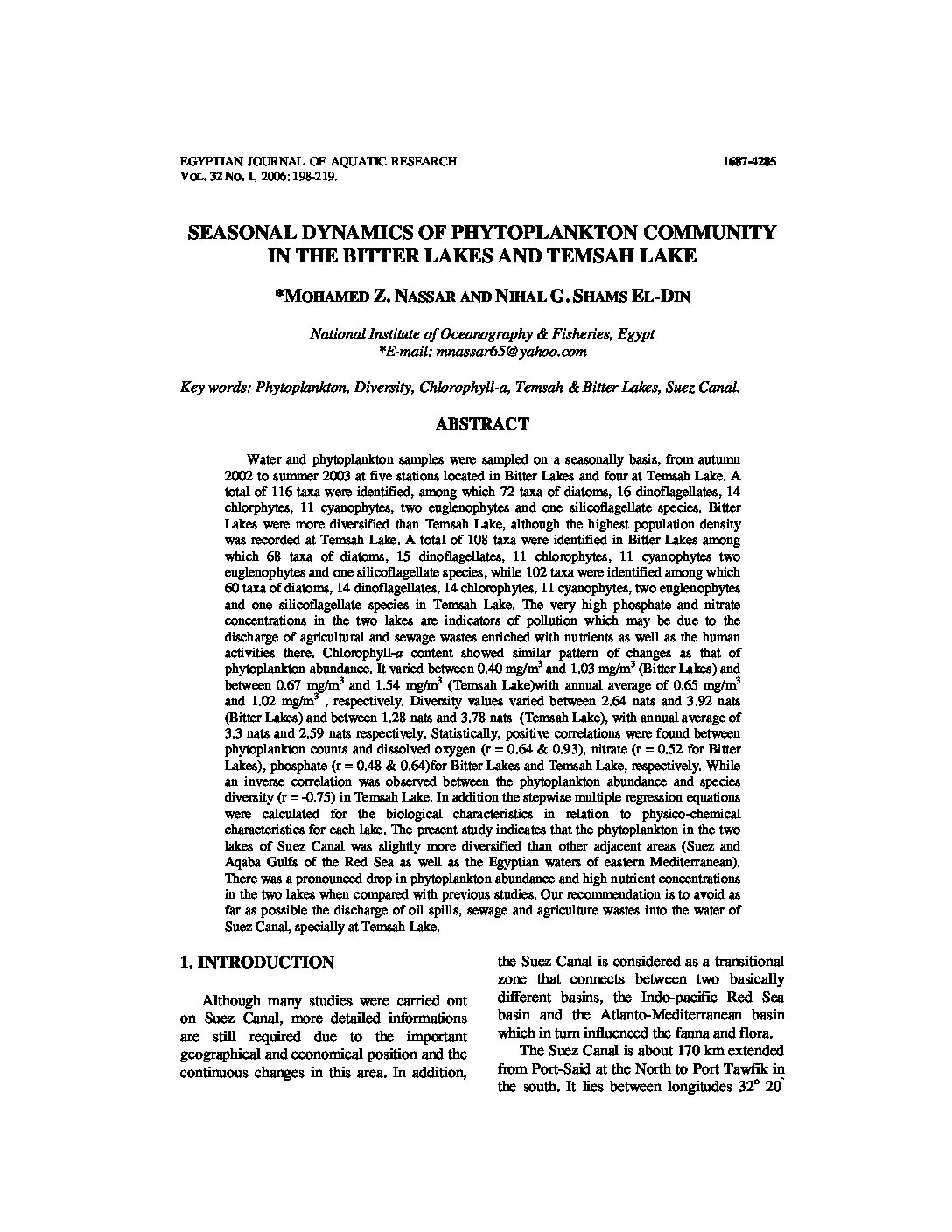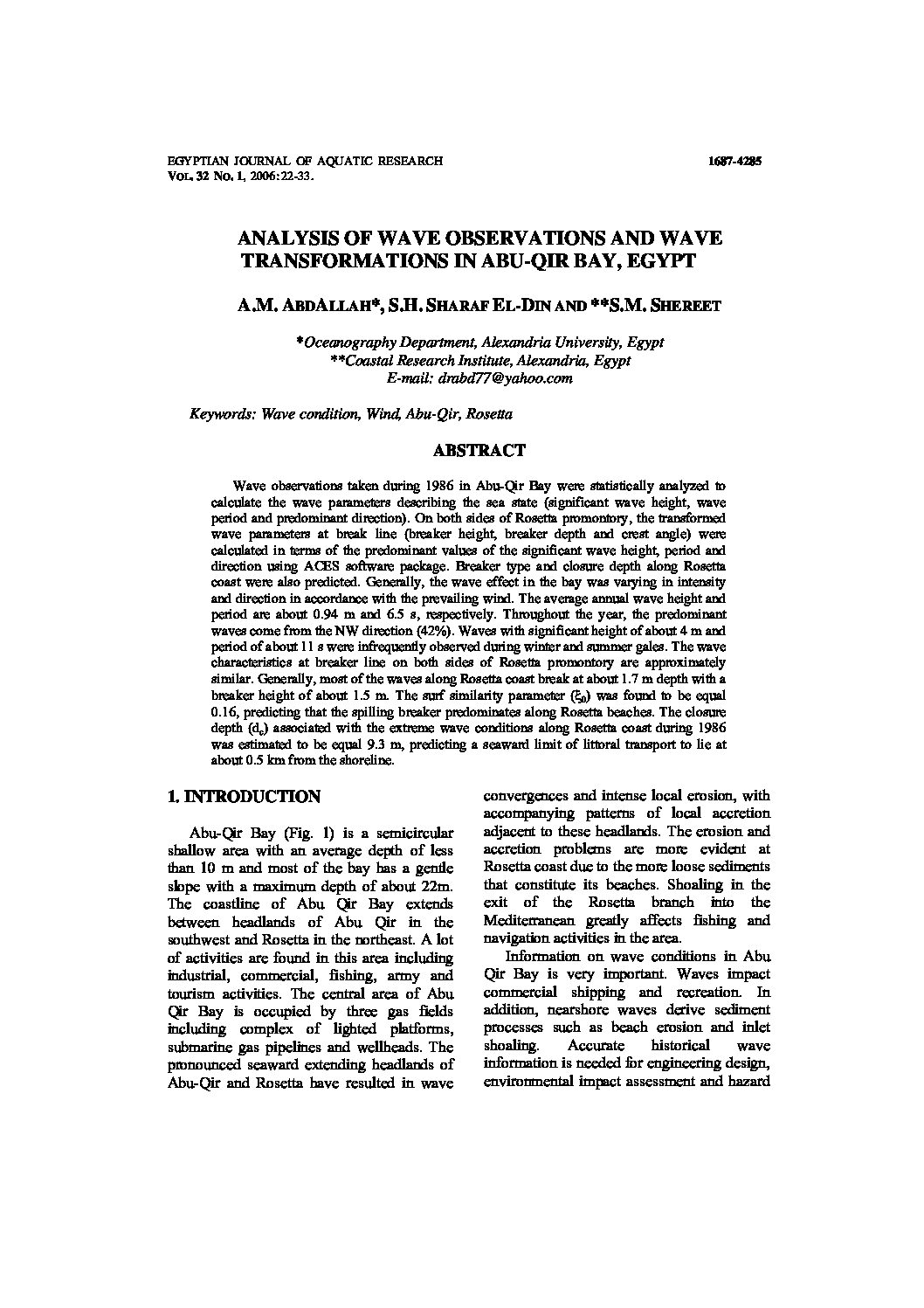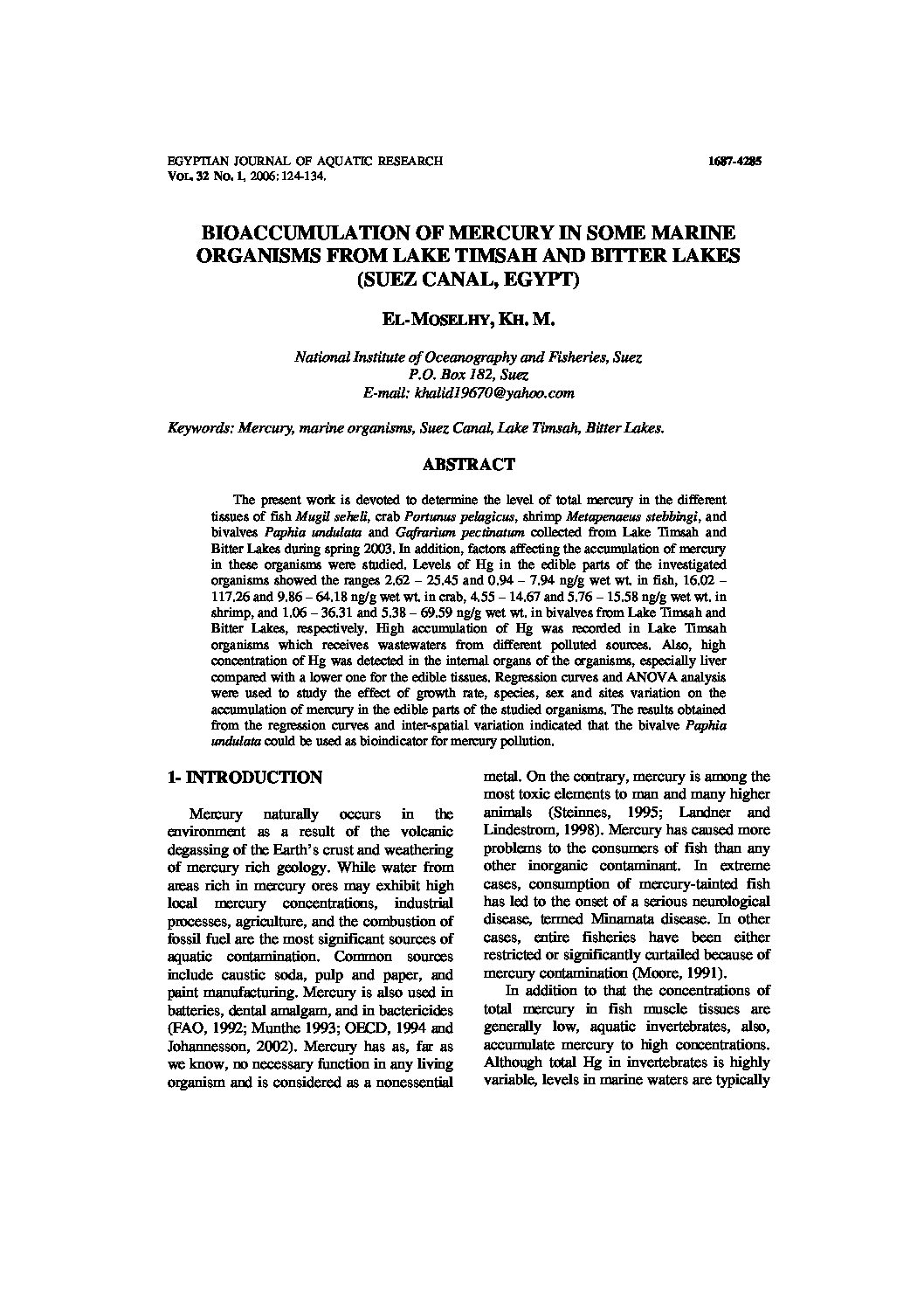Categories
vol-32SEASONAL DYNAMICS OF PHYTOPLANKTON COMMUNITY
IN THE BITTER LAKES AND TEMSAH LAKE
*MOHAMED Z. NASSAR AND NIHAL G. SHAMS EL-DIN
National Institute of Oceanography & Fisheries, Egypt
*E-mail: [email protected]
Key words: Phytoplankton, Diversity, Chlorophyll-a, Temsah & Bitter Lakes, Suez Canal.
ABSTRACT
Water and phytoplankton samples were sampled on a seasonally basis, from autumn
2002 to summer 2003 at five stations located in Bitter Lakes and four at Temsah Lake. A
total of 116 taxa were identified, among which 72 taxa of diatoms, 16 dinoflagellates, 14
chlorphytes, 11 cyanophytes, two euglenophytes and one silicoflagellate species. Bitter
Lakes were more diversified than Temsah Lake, although the highest population density
was recorded at Temsah Lake. A total of 108 taxa were identified in Bitter Lakes among
which 68 taxa of diatoms, 15 dinoflagellates, 11 chlorophytes, 11 cyanophytes two
euglenophytes and one silicoflagellate species, while 102 taxa were identified among which
60 taxa of diatoms, 14 dinoflagellates, 14 chlorophytes, 11 cyanophytes, two euglenophytes
and one silicoflagellate species in Temsah Lake. The very high phosphate and nitrate
concentrations in the two lakes are indicators of pollution which may be due to the
discharge of agricultural and sewage wastes enriched with nutrients as well as the human
activities there. Chlorophyll-a content showed similar pattern of changes as that of
phytoplankton abundance. It varied between 0.40 mg/m
3
and 1.03 mg/m3
(Bitter Lakes) and
between 0.67 mg/m3
and 1.54 mg/m3
(Temsah Lake)with annual average of 0.65 mg/m3
and 1.02 mg/m3
, respectively. Diversity values varied between 2.64 nats and 3.92 nats
(Bitter Lakes) and between 1.28 nats and 3.78 nats (Temsah Lake), with annual average of
3.3 nats and 2.59 nats respectively. Statistically, positive correlations were found between
phytoplankton counts and dissolved oxygen (r = 0.64 & 0.93), nitrate (r = 0.52 for Bitter
Lakes), phosphate (r = 0.48 & 0.64)for Bitter Lakes and Temsah Lake, respectively. While
an inverse correlation was observed between the phytoplankton abundance and species
diversity (r = -0.75) in Temsah Lake. In addition the stepwise multiple regression equations
were calculated for the biological characteristics in relation to physico-chemical
characteristics for each lake. The present study indicates that the phytoplankton in the two
lakes of Suez Canal was slightly more diversified than other adjacent areas (Suez and
Aqaba Gulfs of the Red Sea as well as the Egyptian waters of eastern Mediterranean).
There was a pronounced drop in phytoplankton abundance and high nutrient concentrations
in the two lakes when compared with previous studies. Our recommendation is to avoid as
far as possible the discharge of oil spills, sewage and agriculture wastes into the water of
Suez Canal, specially at Temsah Lake.







